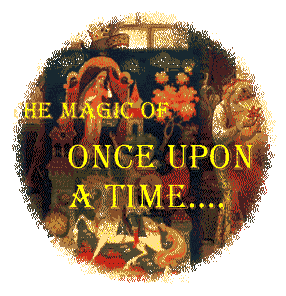|
Narrative Logo - Click for Main Menu Lecture IV: The Origins of Tales Review of the Last Three Weeks A look back.
Introduction and Orientation - the Magic of Once Upon a Time Introduction to Fables and Folktale: an overall look at the nature of folklore and the approaches we can take to studying the history, evolution, and features of folk tales and fables.
Tales Told Around the Fire - The Oral Folk Tradition The Kinds of folk material we find in all cultures. Fairy tales, nursery rhymes, "tall tales," ghost stories, chants, jokes, songs, "old wives' tales," spells, parables, urban legends, and, of course, fables are all part of this age-old tradition. (Our Folkchart organizes these into categories for easier understanding.) The Reasons why we are enchanted by oral legendstock and the print counterparts of this material. These folk creations may circulate in cultures for centuries before they are captured in print. Tales enchant us for several reasons. They beguile us because they are always new, because they are often told in an atmosphere of intimacy, because they are sometimes more daring and exciting than what appears in print, and because they necessarily speak to our deepest hopes and fears in a sensory, imaginative way.
The Characteristics and History of the Oral Tale
The Features which characterize the oral tradition and the History of a tale as it is transformed into a written document. Oral tradition is characterized by certain features that may no longer apply once a tale or legend is immortalized in written language. The most important of these is that it is always changing. No tale is ever the same, even if the teller is. The environment changes, certainly, but the tale changes, too, by virtue of voice inflection, word choice, patterning and arrangement, and even, and most frequently, as the details and events of the tale shift and alter according to the audience. Second, each tale has a "persistence curve." The popularity of a tale will undergo a cultural structuring as it either survives, or fails to survive, in a particular culture. Third, tales have recurrent patterns or "morphologies" that manifest across cultures and through time. EVER CHANGING/INTIMATE/DARING/IMAGINATIVE/PERSISTENT Folklore scholars differ as to the reasons that a piece of folklore comes to be frozen and immortalized in writing. Once a tale is written down, however, the characteristics of it change, and it undergoes an entirely different, even double, history from then on. Thus, so far, we have surveyed some basic approaches to studying folklore-- we have looked at examples of many kinds of folk materials, seen how they are related to other literature, investigated the characteristics, and surveyed certain features that we can use as a basis for study.
|
